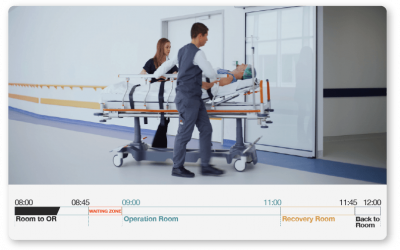“Where’s the thermometer?” The dangers of missing medical assets
“Where’s the thermometer?” The dangers of missing medical assets
Asset Safety
Medical assets include all non-disposable material used in a medical setting. We’re talking oximeters, infusion pumps, clothes, textiles – you name it! These assets are of course very important for providing safe and efficient healthcare. Not having the appropriate medical assets or textiles close at hand can be detrimental to a hospital’s work procedures. If assets aren’t in their designated areas or go missing, nurses can spend up 30% of their time searching for them, taking time and care away from patients. Not only does an inefficient asset overview result in loss of money and resources, in the worst cases, it can also be dangerous for patient safety.
Why do medical assets go missing and where do they go
There are several reasons why assets disappear. Most of the time, they don’t actually leave the hospital premise. However, since the assets remain unutilized for longer periods of time, they’re counted as missing. Hospitals have issues with theft and patients accidentally taking clothes or textiles with them, but usually, missing assets are due to simple mistakes which can easily be resolved. Here are the main reasons why medical assets disappear:
- Assets are moved between departments. Often, hospitals have an initial number of assets for each department. But as day-to-day activities in a large hospital ensue, assets are moved. For example, a staff member might carry an asset with them and forget to return it, or assets in one department run out and staff has to borrow from another department.
- Hospital staff hoard their favourite asset. Because of scarcity, it often happens that staff hides particular assets or clothes, either in their personal locker or in other places. Since hospital staff work in shifts, a hidden asset might not be used for several days until the person comes back. Not only does this create even more scarcity, but it can also contribute to issues with hygiene. Textiles hidden away in personal lockers can gather bacteria from the person’s private clothes.
- Assets are at maintenance. When assets break down or need to be upgraded, they are turned into maintenance. However, if other personnel aren’t informed that one asset has been moved to maintenance it could leave them spending unnecessary time searching for it.
- Patients take textiles with them. It’s not uncommon for blankets, pillows or clothes to be sent home with patients. Often, patients aren’t aware of the fact that they aren’t allowed to keep underwear, shirts or robes provided by the hospital.
Solve the problem with Asset Safety
With BordaTex’s solution Asset Safety, hospitals can keep their assets from being moved unauthorized. With IoT-technology, each asset and textile are marked with an RFID-tag which makes them easily trackable. Simply establish a “safe zone” within the hospital with predetermined areas where each asset should remain. If the asset is moved from that area, an automated alarm is triggered.
Catch theft on camera
For preventing theft, an automatic alarm can be sent to security personnel when assets are moved from the hospital’s premises. In addition, the Asset Safety solution can be integrated with a CCTV system so hospitals can use surveillance for investigations.
Save time, energy and contribute to better health care
Missing assets may seem trivial. One item of clothing or one thermometer doesn’t affect the hospital’s expenditures, but many items over a long period of time can cost a tremendous amount of money. Hospital staff are reliant on medical assets in their work. They shouldn’t have to search for, hide or have a scarcity mindset regarding the tools they need to do their job. Tracking assets isn’t just to save money, it also contributes to staff wasting less time on unnecessary tasks. In an already taxing work environment, streamlining certain procedures allows staff to place their energy where it’s needed the most – with the patients.
Do you want to learn more about the opportunities of using RFID-tags to track your medical assets? Please contact us here.



